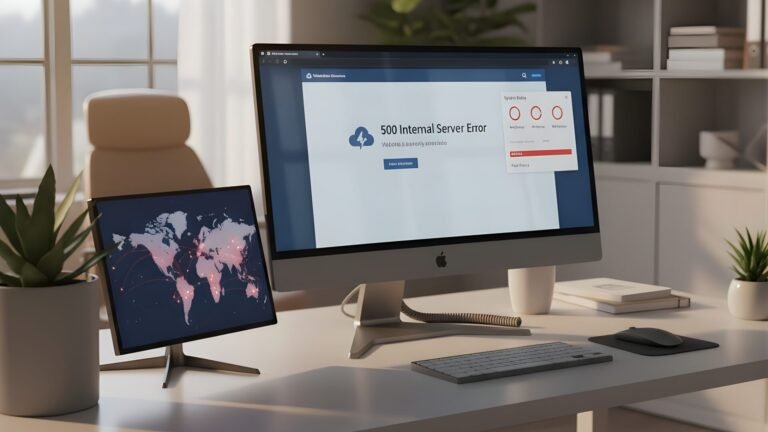Introduction
Digital advertising in 2025 demands more than creativity and budget allocation—it requires precision benchmarking. Knowing how well an ad performs relative to competitors and industry averages determines whether a campaign is thriving or merely running. This is where ad performance benchmarks and free ad tools become indispensable.
Benchmarking helps measure the true impact of ad campaigns, ensuring every click, impression, and conversion is analyzed in context. With advanced analytics and automation now available even in free tools, businesses can optimize campaigns more effectively than ever before.
This guide outlines the essential free tools and metrics needed to benchmark advertising performance like a professional, including how the Flutebyte Ad Calculator simplifies campaign planning and ROI tracking.
Why Ad Performance Benchmarking Matters
Benchmarking goes beyond comparing numbers—it defines what “success” truly looks like. Without it, marketers might misinterpret high click-through rates or low cost-per-click as success, even if the conversions or revenue outcomes tell another story.
1. Context is Everything
A campaign generating a 3% click-through rate might seem strong until compared against industry averages of 4–6%. Similarly, a $50 cost-per-acquisition could be excellent in B2B SaaS but inefficient in e-commerce. Ad performance benchmarks provide that essential context.
2. Continuous Improvement
Benchmarks act as a compass for optimization. They help pinpoint underperforming channels, highlight high-value audiences, and support smarter budget reallocations.
3. Data-Driven Decision Making
Benchmarking converts raw metrics into actionable insights. When combined with free ad tools, it enables teams to predict outcomes, simulate ad spend scenarios, and optimize ROI efficiently.
Key Ad Performance Benchmarks to Track in 2025
To benchmark effectively, understanding the right metrics is essential. Below are the most critical ones across major advertising platforms:
1. Click-Through Rate (CTR)
Measures ad engagement by dividing clicks by impressions.
Ideal Benchmark (2025):
- Google Search Ads: 4–8%
- Display Ads: 0.5–1%
- Social Media Ads: 1–3%
2. Conversion Rate (CVR)
Indicates how many clicks lead to desired actions such as purchases or form fills.
Ideal Benchmark (2025):
- E-commerce: 2–4%
- Lead Generation: 5–10%
3. Cost Per Click (CPC)
Reflects how much is spent per click.
Benchmark Range (2025):
- Google Ads: $0.50–$3.00
- LinkedIn Ads: $3.50–$7.00
- Meta (Facebook & Instagram) Ads: $0.40–$1.50
4. Return on Ad Spend (ROAS)
Compares revenue generated to ad spend.
Healthy Benchmark:
- General: 4:1 (for every $1 spent, $4 earned)
5. Cost Per Acquisition (CPA)
Tracks total cost to acquire one customer or lead.
Benchmark Range:
- E-commerce: $10–$50
- SaaS: $150–$300
- B2B Lead Gen: $75–$200
Having these numbers as a reference helps calibrate performance expectations and supports smarter campaign scaling.
Best Free Tools to Benchmark and Optimize Ad Performance
A growing number of free ad tools in 2025 make performance tracking simpler and more accurate. Below is a curated list of the most effective ones for benchmarking.
1. Google Ads Benchmark Reports
Google Ads’ built-in benchmarking tool provides real-time comparison data against competitors in the same niche.
Key Insights:
- Impression share vs. competition
- Average position and overlap rate
- CPC trends by industry
Why It’s Useful:
Provides reliable data directly from Google’s ecosystem, helping advertisers understand how their campaigns rank across similar industries.
2. Meta (Facebook & Instagram) Ads Library
This free library allows reviewing competitors’ active ads.
Key Insights:
- Ad creatives, formats, and placements
- Transparency on targeting and spend patterns
Why It’s Useful:
Studying high-performing creatives helps identify design and message trends that drive conversions in your industry.
3. SEMrush Advertising Research
SEMrush’s free tier offers valuable competitor insights and keyword benchmarks.
Key Insights:
- Competitor ad copies and traffic data
- CPC and search volume analysis
- Keyword performance comparison
Why It’s Useful:
Ideal for understanding keyword competitiveness and refining Google Ads strategy.
4. Google Analytics 4 (GA4)
The new GA4 provides deeper integration with ad platforms, enabling comprehensive ad performance analysis.
Key Insights:
- Cross-channel attribution
- Event-based conversion tracking
- Audience performance segmentation
Why It’s Useful:
Allows complete visibility into how ads influence user behavior from click to conversion.
5. Flutebyte Ad Calculator (Free)
The Flutebyte Ad Calculator is an advanced yet free online tool that helps forecast ad performance and budget ROI in seconds.
Key Insights:
- Customizable ad spend projections
- ROI estimation based on conversion rate, CPC, and CTR inputs
- Visual breakdown of performance metrics
Why It’s Useful:
Unlike most tools limited to analytics, it allows proactive planning—helping teams simulate different budget scenarios to predict performance outcomes before spending.
This tool is particularly valuable for small and medium businesses seeking clarity on how much they should spend and what return they can realistically expect.
6. SimilarWeb Digital Marketing Benchmarking
Provides detailed traffic and ad insights for competitors and industries.
Key Insights:
- Ad channel mix (search, social, display)
- Audience engagement rates
- Competitive CPC ranges
Why It’s Useful:
A holistic overview of performance trends within a specific market, ideal for benchmarking new campaigns.
7. AdEspresso by Hootsuite (Free Plan)
Offers ad analysis and split-testing capabilities for Meta platforms.
Key Insights:
- A/B testing reports
- Cost per result benchmarks
- Audience behavior tracking
Why It’s Useful:
Perfect for smaller teams experimenting with multiple ad variants to identify what performs best.
8. SpyFu Ad Competitor Research
SpyFu’s free plan offers visibility into competitors’ historical ad data.
Key Insights:
- PPC keyword strategy
- Ad performance history
- CPC and CTR benchmarks
Why It’s Useful:
Allows better positioning by understanding what’s driving results in similar campaigns.
9. WordStream’s Free Google Ads Performance Grader
This free tool audits Google Ads accounts and benchmarks performance metrics against industry standards.
Key Insights:
- Quality Score analysis
- Wasted spend identification
- Benchmark comparison report
Why It’s Useful:
Provides instant recommendations to improve ad efficiency and reach better ROI.
10. HubSpot Ads ROI Calculator
HubSpot’s ROI calculator helps estimate the profitability of campaigns.
Key Insights:
- Lead generation cost
- Conversion-based ROI predictions
Why It’s Useful:
Supports decision-making by forecasting returns before campaign launch.
Integrating Benchmark Data Into Your Ad Strategy
Having benchmarks and tools is only half the job. The real advantage comes from applying insights effectively.
1. Create Data-Backed Goals
Instead of setting arbitrary targets like “increase clicks,” set measurable benchmarks such as “achieve a CTR 15% above the industry average.”
2. Allocate Budget Based on ROI
Use calculators like Flutebyte’s to identify high-ROI channels and reallocate budgets accordingly.
3. Test and Iterate
Consistent A/B testing ensures campaigns remain optimized as audience behavior evolves.
4. Monitor Competitors Regularly
Using tools like SEMrush or SimilarWeb helps stay aware of shifts in CPC and conversion trends.
5. Automate Reporting
Integrate data from GA4, Google Ads, and Meta into a single dashboard to analyze performance efficiently.
Emerging Trends in Ad Benchmarking (2025 and Beyond)
The advertising landscape is rapidly evolving, making continuous benchmarking more vital than ever.
1. AI-Driven Predictive Analytics
AI-based systems analyze historical data to predict campaign outcomes and suggest optimizations automatically.
2. Cross-Platform Attribution Models
GA4 and similar tools now provide advanced multi-touch attribution, helping measure performance across different ad networks accurately.
3. Privacy-Centric Tracking
As third-party cookies phase out, tools that focus on privacy-compliant tracking (e.g., first-party data analytics) are becoming essential for accurate benchmarking.
4. Real-Time Benchmark Updates
Modern tools are updating benchmarks dynamically based on current campaign data, ensuring decisions are always backed by the latest insights.
How Flutebyte Simplifies Advertising Performance Management
Flutebyte Technologies combines advanced analytics, automation, and software expertise to help businesses improve their ad efficiency.
From custom dashboard development and SaaS solutions to Shopify and web platforms, Flutebyte builds digital tools that empower smarter decision-making.
The Flutebyte Ad Calculator exemplifies this commitment—offering a free, data-driven way to estimate ROI and benchmark ad campaigns efficiently.
Conclusion
Benchmarking ad performance is no longer optional—it’s essential for data-driven marketing in 2025.
By leveraging ad performance benchmarks and combining insights from free ad tools such as Google Ads reports, SEMrush, and Flutebyte’s Ad Calculator, businesses can achieve better clarity, optimize spend, and boost profitability.
Flutebyte Technologies continues to empower businesses worldwide with cutting-edge web development, software solutions, Shopify stores, SaaS platforms, and tailored IT services—all designed to enhance performance and deliver measurable outcomes.
Visit flutebyte.com to access the free ad calculator and explore custom digital solutions that make advertising more intelligent and efficient.
FAQs
1. What is ad performance benchmarking?
Ad performance benchmarking is the process of comparing your ad metrics such as CTR, CPA, and ROAS against industry averages to measure effectiveness and identify improvement opportunities.
2. Why use free ad tools for benchmarking?
Free tools provide quick insights into campaign performance without additional cost, allowing for smarter decision-making and budget allocation.
3. How does the Flutebyte Ad Calculator help advertisers?
The Flutebyte Ad Calculator helps estimate ROI and predict campaign outcomes based on spend, conversion rate, and click metrics—offering data-backed guidance for ad budgeting.
4. How often should ad performance benchmarks be updated?
Benchmarks should be reviewed quarterly or whenever major changes occur in ad platforms, algorithms, or campaign structures.
5. Can benchmarking improve ROI?
Yes. By identifying underperforming areas and aligning goals with proven benchmarks, advertisers can improve ROI through targeted optimizations.
Sources
- Google Ads Benchmark Report 2025 – Google Ads Help Center
- Meta Ads Library – Meta for Business
- SEMrush Advertising Research Tools
- WordStream Google Ads Performance Grader
- Flutebyte Ad Calculator




